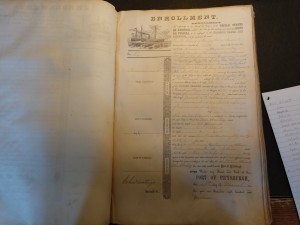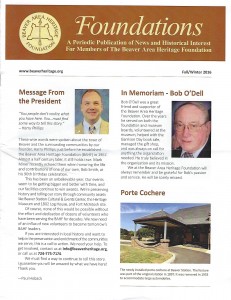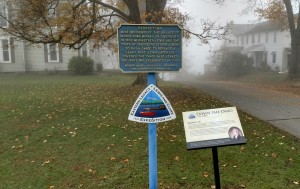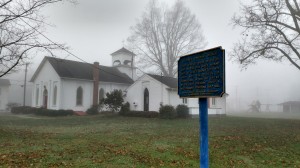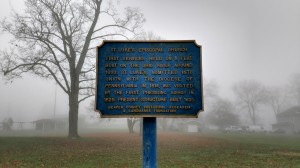For Georgetown the years between 1852-1858 were a time of speedy economic growth. River business prospered. The following table lists the partnership of owners over six years of one steamer, str Washington City, plying various inland rivers. Few Poe family packets survived as long.
The consistency of these findings taken from the Record Type 41 of the Certificates of Enrollment are unusual. Other Poe family steamboats changed ownership annually and were often bought and sold outside the family within three years. The following table lists the owners of the str Washington City from 1852-1857. Although no data was found for 1855 during this research trip, it should be remembered that in Apr 1855 Capt Joseph MC Calhoon died of cholera in Alton, IL. Despite dangerous high-water conditions Capt George Washington Ebert, a brother-in-law, clerk James Wilkins a brother-in-law, /pilot Jacob Poe a brother-in-law, and a skeleton crew of Georgetown relatives, steamed to St Louis to recover the body and return it for burial in Georgetown Cemetery. Proof that the str Washington City was actively working in 1855. The absence of data for 1855 is most unfortunately due to pages torn from the Enrollment and License book of records.
| 1852 | 1853 | 1854 | 1855 | 1856 | 1857 | |
| Richard Calhoon | ||||||
| Samuel Cadman | 2/16 | 2/16 | 2/16 | 2/16 | 2/16 | |
| George W Ebert | 3/16 M | 3/16 M | 3/16 M | 3/16 M | 3/16 M | |
| AB Gallatin | ||||||
| Samuel Moore | 2/16 | 2/16 | 2/16 | 2/16 | 2/16 | |
| Steel McMillen | ||||||
| John S McMillin | ||||||
| Adam Poe | ||||||
| Andrew Poe | ||||||
| George Poe | ||||||
| Jacob Poe | 3/16 | 3/16 | 3/16 | 3/16 | 3/16 | |
| Thomas W Poe | ||||||
| Samuel Smith | 2/16 | 2/16 | 2/16 | 2/16 | 2/16 | |
| Thomas Smith | 2/16 | 2/16 | 2/16 | 2/16 | 2/16 | |
| JT Stockdale | ||||||
| James Wilkins | 2/16 | 2/16 | 2/16 | 2/16 | 2/16 | |
In 1857,the town fielded a fleet of ten steamboats to work on all inland rivers as far as the lower Missouri River. Several keelboats were also launched by Georgetown rivermen. The following table lists the steamers 0f 1857 and the men who owned and commanded them.
Georgetown Packets in 1857
| Belfast | Belmont | Clifton | Grand Turk | John G Fremont | Metropolis | Neptune | Silver Wave | Wash City | |
| R Calhoon | 3/16 M | ||||||||
| James Diehl | 1/8 | 1/8 | |||||||
| GW Ebert | 3/16 M | 1/8 | 1/8 | 3/16 M | |||||
| AB Gallatin | 1/8 M | ||||||||
| Eliz McClure | 1/8 | ||||||||
| Steel McMillen | 3/32 | ||||||||
| JS McMillin | 13/16 M | ||||||||
| Adam Poe | 1/2 M | 3/8 M | |||||||
| Andrew Poe | 1/8 | ||||||||
| George Poe | 1/8 | 1/8 | 1/16 | ||||||
| Jacob Poe | 1/8 | 3/16 | 1/4 | 1/8 | 3/16 | 3/16 | |||
| Thomas Poe | 1/4 | 1/4 | 1/8 M | 1/8 | 1/4 | ||||
| Samuel Smith | 1/8 | ||||||||
| Thomas Smith | 1/8 | 1/8 | |||||||
| Alan Stockdale | 1/8 | ||||||||
| JT Stockdale | 3/8 M | ||||||||
| Samuel Trimble | 1/8 | ||||||||
| David Wilkins | 3/32 | ||||||||
| James Wilkins | 1/8 |
Notes:
(1) In an effort of complete disclosure, George Washington Ebert . The Poes and Samuel Trimble were my third great uncles, Elizabeth (Poe) McClure my third great aunt.
(2) The bold faces names in the table are the principle steamboat captains who built, piloted, and operated the boats on many rivers far from home – Georgetown. The names in lighter type are investors who did not work on the rivers.
(3) John Smith McMillin and Steel McMillen were brothers although the Custom House clerk spelled their last name differently on several enrollment certs.
(4) Samuel and Thomas Smith lived in the village opposite Georgetown on the Ohio River named Smiths Ferry. They operated a ferry which had served the two settlements since circa 1794.
(5) Samuel Cadman, Samuel Moore, and David and James Wilkins resided in Pittsburgh and Allegheny City.
(6) “M” in the fractional ownership cells indicates “Master” as listed on both the Enrollment and License forms.
Copyright@2018 FrancisWNash
All Rights Reserved
No part of this website may be reproduced without permission in writing from the author.
